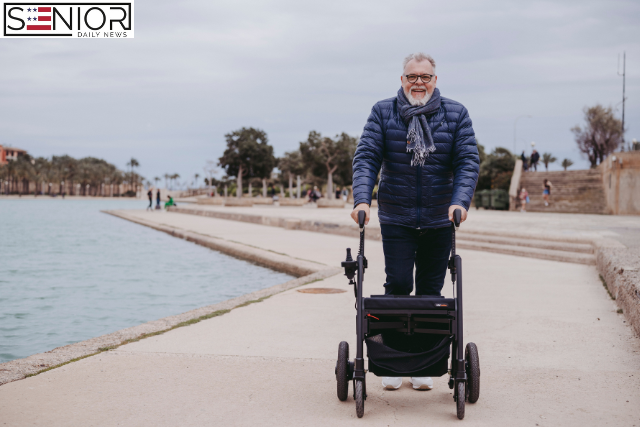The Future of Mobility Devices: Beyond the Wheelchair

Mobility is essential to independence, dignity, and quality of life. For generations, the wheelchair has symbolized freedom for millions of people with disabilities and age-related movement limitations. But as technology rapidly evolves, we are entering a new era of assistive innovation—one that reimagines how people move, interact, and thrive in their environments.
From robotic exoskeletons to smart prosthetics and AI-assisted mobility scooters, the future of mobility devices is more promising, diverse, and empowering than ever before. This article explores the evolution of mobility tools, their impact on users, and how innovation is transforming lives beyond the limitations of the traditional wheelchair.
The Evolution of Mobility Devices
Mobility devices have existed in some form for centuries. From crude wooden crutches in ancient Egypt to wheeled carts used in 6th-century China, humans have long sought tools to support mobility limitations.
The modern manual wheelchair, developed in the late 1800s, became widely adopted by the mid-20th century, especially after World War II. Since then, we’ve seen the rise of powered wheelchairs, walkers, canes, and scooters.
But despite their utility, traditional devices often come with barriers:
- Limited terrain adaptability
- Inflexibility in movement
- Social stigma or perception of passivity
- Strain on shoulders and joints for manual users
These challenges have driven engineers, designers, and users themselves to push for alternatives—devices that do more than assist; they enable and empower.
Breaking Boundaries: Innovative Mobility Technologies
The next generation of mobility tools blends biomechanics, artificial intelligence, robotics, and user-centered design. Here are some of the most groundbreaking advancements:
1. Exoskeletons and Wearable Robots
Exoskeletons are wearable robotic systems that support or enhance human movement. They’re revolutionizing how people with spinal cord injuries, multiple sclerosis, or stroke impairments walk again.
Examples:
- ReWalk: A powered exoskeleton that helps paraplegics stand, walk, and climb stairs.
- Ekso Bionics: Used in rehab centers to rebuild strength and gait for stroke survivors.
- Honda Walking Assist: Designed for elderly users to support natural walking patterns.
Benefits:
- Restores upright mobility
- Enhances muscle activity and cardiovascular health
- Reduces caregiver dependence
2. All-Terrain and Standing Wheelchairs
Modern wheelchairs are no longer bound to flat, paved surfaces. New designs offer versatility and functionality:
- Track-equipped chairs (like Action Trackchair) handle sand, snow, or rough trails.
- Standing wheelchairs allow users to elevate into a vertical position for eye-level conversation, reach, or cooking.
- Tilting/reclining wheelchairs enhance circulation and prevent pressure sores.
Benefits:
- Expanded environments for recreation and work
- Improved physical health and blood circulation
- Greater social engagement through better posture and access
3. Stair-Climbing Devices
Navigating stairs is one of the greatest obstacles for mobility-impaired individuals, especially in older buildings without elevators.
Solutions include:
- iBOT by Mobius Mobility: Balances on two wheels and climbs stairs
- Scewo Bro: A sleek Swiss-designed wheelchair that uses tank-like treads
These innovations reduce the need for structural home modifications and expand travel options.
4. AI-Powered Smart Scooters and Chairs
Artificial intelligence is entering the mobility scene to optimize safety, comfort, and usability.
Features include:
- Obstacle detection and automatic braking
- Route planning for indoor/outdoor navigation
- Voice-activated controls
- Integration with smartphones and smart home devices
Example:
- WHILL Model C2: A power chair with remote control via smartphone, tight turning radius, and Bluetooth integration.
Benefits:
- Intuitive use for tech-savvy users
- Enhanced independence, even in crowded spaces
- Less reliance on caregivers
5. Mobility Innovations for Aging in Place
As populations age, there’s a push for devices that allow seniors to remain active at home and in the community.
Emerging technologies include:
- Smart walkers with fall detection and real-time feedback
- Mobility-assistive robots that carry items, monitor vitals, and offer support while walking
- Augmented Reality (AR) navigation aids to assist those with vision loss
These tools integrate seamlessly into daily life, prioritizing dignity and adaptability.
6. Accessible Micromobility
Inclusive design is reaching shared mobility too. As cities adopt e-scooters and bikes, some startups are offering adaptive versions for users with disabilities.
Examples include:
- Three-wheeled adaptive e-scooters
- Tandem e-bikes with co-pilot seating
- Community bike-share programs with wheelchair-accessible trikes
This ensures that urban mobility solutions are equitable and inclusive for all citizens.
Comparing Traditional vs. Future-Focused Mobility Devices
| Feature | Traditional Wheelchairs | Next-Gen Mobility Devices |
|---|---|---|
| Terrain Adaptability | Limited to smooth surfaces | All-terrain, stairs, urban landscapes |
| Posture & Functionality | Seated, minimal dynamic options | Standing, reclining, wearable |
| User Engagement | Passive support | Active muscle use, training potential |
| Tech Integration | Minimal | AI, Bluetooth, smartphone-controlled |
| Cost Range | $500–$5,000 | $3,000–$100,000+ |
| Social Visibility/Stigma | High (due to “wheelchair identity”) | Reduced with modern design aesthetics |
| Use in Therapy/Rehabilitation | Moderate | High potential in neuro rehab centers |
While next-gen devices are generally more expensive and less widely available, the long-term benefits in health, freedom, and autonomy are compelling.
Challenges in Adopting Next-Generation Devices
Despite the promise, barriers remain:
1. Cost and Insurance Coverage
High-tech devices often cost tens of thousands of dollars and are not fully covered by insurance or Medicare/Medicaid.
2. Training and Adaptation
Learning to use a robotic exoskeleton or AI-powered chair can be intimidating. Users may need ongoing support.
3. Accessibility and Availability
Not all countries or regions have access to advanced devices, limiting options for many.
4. Maintenance and Repairs
The more complex the tech, the more likely repairs are costly and time-consuming.
Advocacy, innovation, and policy changes are needed to bring equitable access to these tools.
FAQs: The Future of Mobility Devices
Q: Are exoskeletons available for home use?
A: Yes, some like ReWalk are FDA-approved for personal use, but require training and medical clearance.
Q: Can mobility tech be customized to individual needs?
A: Absolutely. Most advanced devices offer custom fittings, software adjustments, and modular accessories.
Q: Will insurance ever cover these new devices?
A: It’s evolving. Some countries and private insurers now partially reimburse newer tools, especially when medically justified.
Q: Are smart mobility devices hard to learn?
A: Most are designed with intuitive controls. Still, some training is needed, especially for features like stair climbing or AR navigation.
Q: What’s the best future device for seniors with mild mobility issues?
A: Smart walkers or light mobility scooters with safety features, GPS, and emergency alerts are great entry points.
Future Outlook: Empowerment Through Design
The future of mobility devices isn’t about replacing wheelchairs—it’s about expanding possibilities.
- For the elderly, it means living independently longer, with dignity and freedom.
- For individuals with disabilities, it means pursuing careers, hobbies, and travel without barriers.
- For caregivers and families, it means reduced burden and greater peace of mind.
This new generation of tools is more than assistive—it’s transformative.
As tech companies, healthcare providers, and disability advocates collaborate, the dream of inclusive, intelligent mobility for all is becoming reality.
Conclusion: Moving Toward a More Inclusive Future
Mobility is not a luxury—it’s a human right. The devices that enable it are more than tools; they’re gateways to opportunity, independence, and full participation in life.
As we move beyond the traditional wheelchair, the path forward is paved with innovation, empowerment, and design that puts the user first. Whether it’s climbing stairs with a robotic chair, standing to make eye contact, or navigating a busy street with AI guidance, the future of mobility is about unlocking potential.
By supporting research, advocating for funding, and educating ourselves and others, we can ensure that mobility innovation reaches those who need it most—and not just the privileged few.
Image Designed Using Canva






